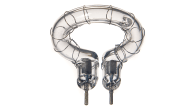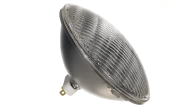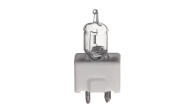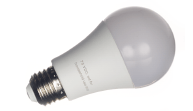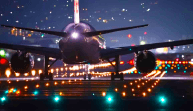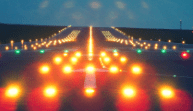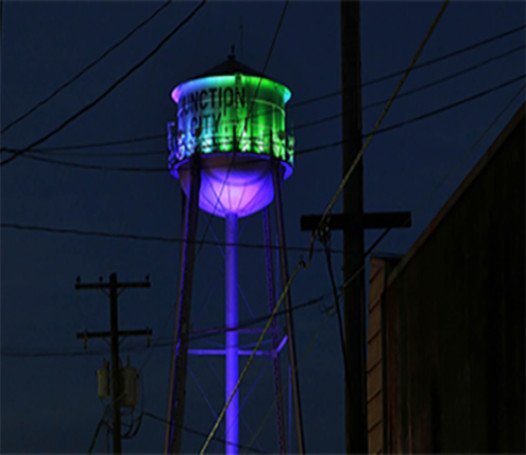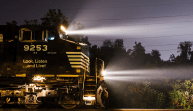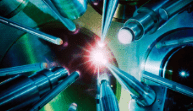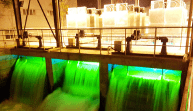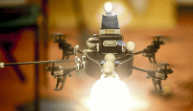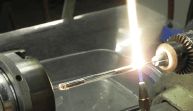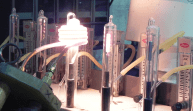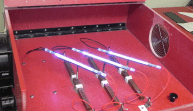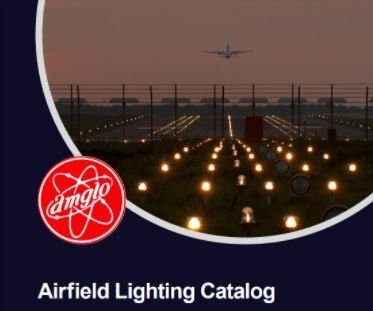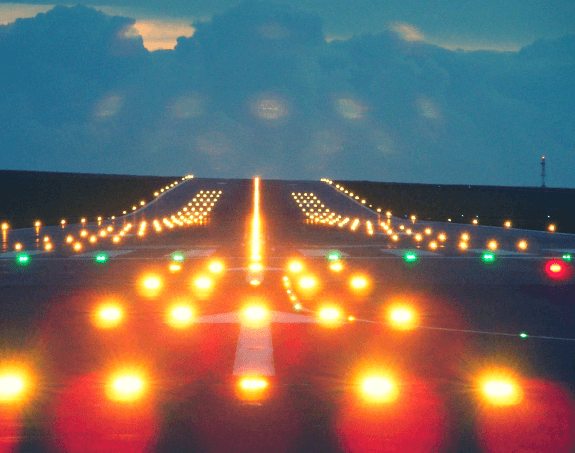
How Airports and Aircraft Shine Bright with a Little Help from Amglo
If you’ve ever flown into an airport at night, you’ve likely noticed the glittering grids of blue, green, and white guiding your way to the gate. However, what lies behind those lights isn’t just visual appeal. It is a high-stakes system engineered to ensure safety, precision, and regulatory compliance. A couple of weeks ago we shared an article on social media by Skybrary, an electronic repository of safety knowledge related to flight operations, air traffic management (ATM) and aviation in general (https://skybrary.aero/articles/aerodrome-lighting). The article pointed out that airport lighting systems aren’t random decorations—they’re meticulously standardized under ICAO Annex 14, the FAA’s AC 150/5340-30J, and IEC 61827, which outlines equipment specs down to luminaire tolerance.
Today, we delve into the world of aerodrome lighting, spotlighting how Amglo supports these systems, both on the tarmac and on board aircraft.
Did you know that each category of lights serves a precise purpose?
• Approach Lighting Systems (ALS) help pilots transition safely from instrument flight to touchdown, with configurations ranging from simple rows for Category I runways to elaborate crossbar grids for Category II/III.
• Runway edge lights define runway margins, vary in intensity (HIRL, MIRL, LIRL), and shift to caution amber at runway ends.
• Centerline/touchdown zone lights provide critical distance and alignment data for pilots during low visibility conditions.
• Additional systems include taxiway edges, lead-ons, runway bi-directional ends, REILs, and PCL/ARCAL control systems. They all contribute to a robust, interlocking network that ensures clarity and safety.
But the lights don’t stop at the runway. Aircraft themselves carry an array of lamps for safety, identification, and maintenance. That’s where Amglo shines.
Amglo designs and manufactures:
• Wingtip, tail, logo, baggage compartment, and gear lights using halogen and xenon flash lamps.
• Landing lights like PAR‑64 Q5559 series: FAA‑PMA certified, ANSI‑compliant, vibrationally tested, and offering a longer lifespan than standard Q4559X bulbs.
• Miniature halogen bulbs for tail logos, gear areas, and inspection lights, all boasting durability and consistent output.
Of course, lamp replacement isn’t just a bulb swap; it’s a decision about operational costs. Choosing higher-quality lamps, such as halogen or LED, pays off in the long run by reducing maintenance labor, flight disruptions, and unexpected downtime.
From standardized runway systems defined by ICAO and FAA, to top-tier wingtip, landing, and taxiway lamps, aircraft lighting is always a coordination of light, safety, and regulation. That’s why we don’t just supply lamps; we engineer solutions. Our products are manufactured to bring:
• Durability (vibration-resistant, weather-sealed)
• Certifications (ANSI, FAA-PMA)
• Longevity (halogen and xenon bulbs with extended lifespans)
• Consistency (stable light output throughout service life)
• Cost efficiency (fewer replacements, less downtime)
Whether you’re an airport operator managing runway lighting systems or an airline ensuring aircraft are ready for the night flight schedule, partnering with us means brighter lights, smoother operations, and better safety, all shining under the global standards set by industry regulators.
In the world of aviation, every light tells a story. From touchdown assistance to taxiway guidance and aircraft recognition, lighting is inextricably tied to safety. And with Amglo’s expertise, lighting both runway and aircraft, that story only grows brighter.

